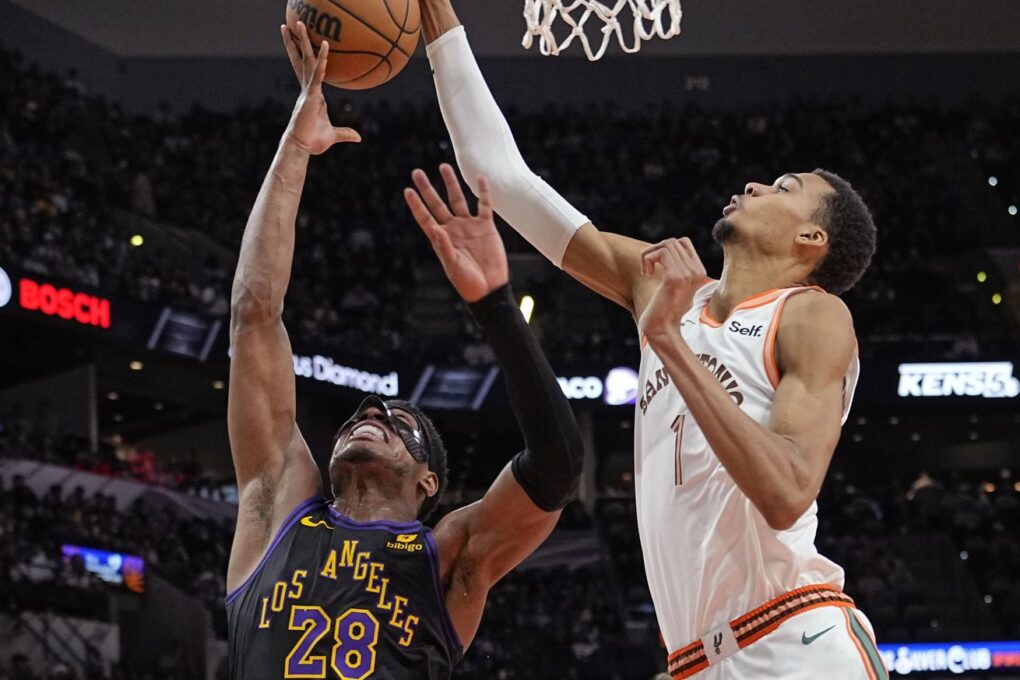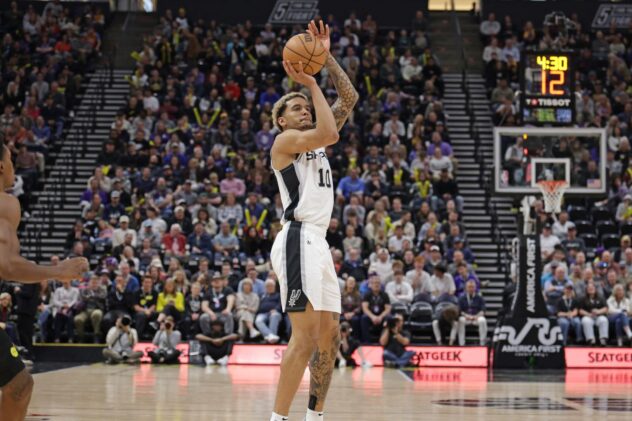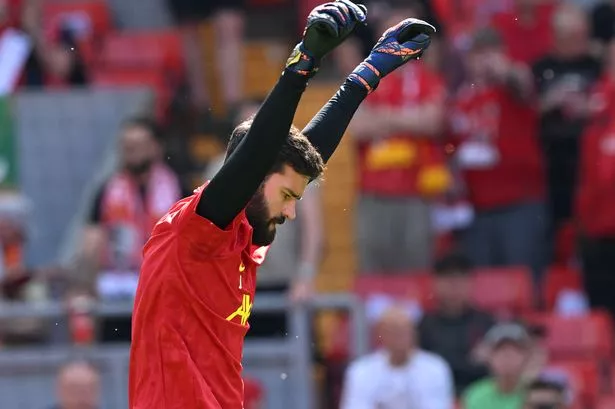What the numbers say about Victor Wembanyama at center

Is Wemby at center really the solution we all think it is?
With the Spurs finally breaking their 18-game losing streak, a lot of fingers were pointed toward the strategy switch of putting Victor Wembanyama at center. This started on December 8th against the Bulls, and we now have five games (data gathered before the game against the Bucks) to assess the impact this has had. This week, we dive into the efficiency statistics to investigate if this is a feasible long-term solution.
In the first graph, you will see offensive versus defensive rating per 48 minutes. We use per 48 minutes as opposed to per game to accommodate for the effects of different paces and playing styles. The size of the scatter point is correlated with the number of minutes we have seen with this lineup. I only pooled the most used lineups containing Wemby and compared the rest of the season against these past five games.
/cdn.vox-cdn.com/uploads/chorus_asset/file/25179158/top_wemby_lineups.png)
There is some favorable bias we developed after seeing the one win to make us believe that this is the adjustment we have been waiting for. The victory against the Lakers was meaningful and needed but it might have been an anomaly from the effects of this switch. The starting lineup that consists of Devin Vassell and Malaki Branham in the backcourt followed by Keldon Johnson, Jeremy Sochan, and Wemby at center offensively ranks right in the middle of the top three most used lineups previously. I would argue the major improvement has come from the defensive end. Those major three used in the first twenty games allowed an average of 115 points per 48 minutes, while the new starting lineup allows just 102.4. All of this culminates in a new net rating of 0.7 which isn’t jaw-dropping but presents progress.
There are ups and downs to the new starting situation. They rack up more steals (11.2 per 48 min in the new versus 5.33 in the old three) and blocks (6.6 vs 5.63), shoot more (41 vs 35.5 attempts), and better from three (35.5% vs 32.57%). But they struggle at the free throw line (72.4% vs 88.2%), aren’t crashing the offensive glass (8.6 vs 11.3) and allow more turnovers (19.8 vs 17.47).
Looping back to the average offense, the graph proves that having Zach Collins on the offensive end wasn’t all that bad. His biggest impact was on the offensive rebounding rate which was significantly different when on the court (11.78 vs 8.6), followed by the squad having less of their own shots blocked (3.6 vs 5.3). The team as a whole also fouls less (15.58 vs 17.2) and draws more fouls (22.6 vs 17.9).
Watching Wemby battle Anthony Davis and scoring in the clutch the way he did in the Suns showed that if given the ball down late, he will find a way to make it happen. Now, whether Gregg Popovich will deviate from true Spurs basketball and allow Wemby to play iso ball more often is a question I don’t have the answer to. As much as we want to see peak Wemby ball out now, the process might be imperative to developing him.
There was light controversy when Cedi Osman was entered into a starting lineup but there is a consistent defensive rating of 88.5 points allowed per 48 minutes whenever he is on the floor. The lineups he is in also generate the highest PIE and true shooting percentages for the team as well. As we gather more data, I would want to further investigate whether this varies based on whether he is inserted at the 2 versus the 3 and if this could be due to him just facing weak bench players.
A peculiar chain of events is that the lineup containing Wemby, KJ, Vassell, Jones, and Sochan appears on the most utilized lists for both sets of data. It must be almost entirely due to the specific lineups faced within the past couple of weeks, as their net ratings could not be farther apart. This lineup during the first twenty games generated an offensive rating of 142.9 per 48 minutes and a defensive rating of 84.4. The same lineup then only scored 72.9 points while allowing 146.2, though this is only based on two games of data.
















